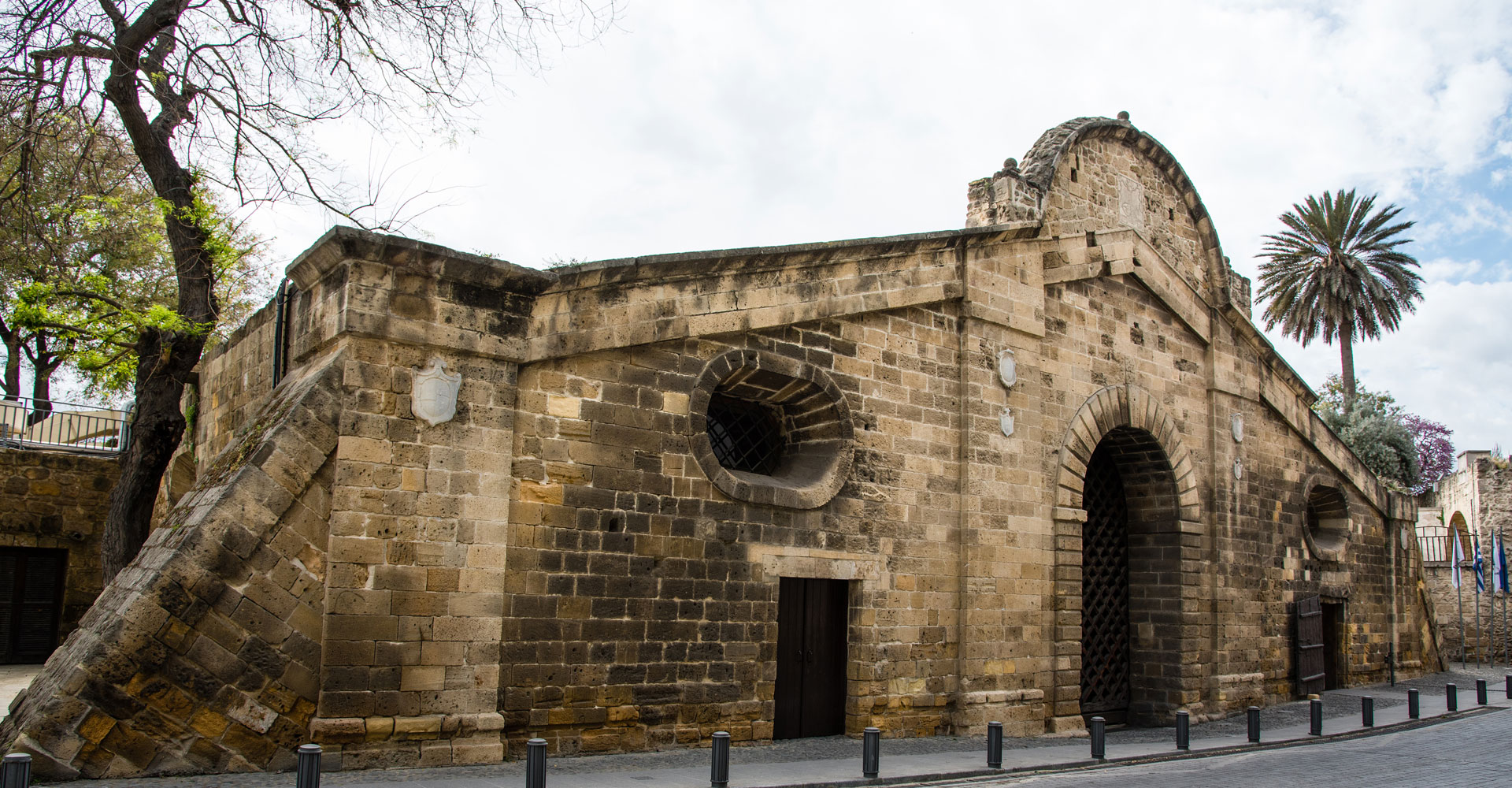
Πύλη Αμμοχώστου – Επαρχία Λευκωσίας
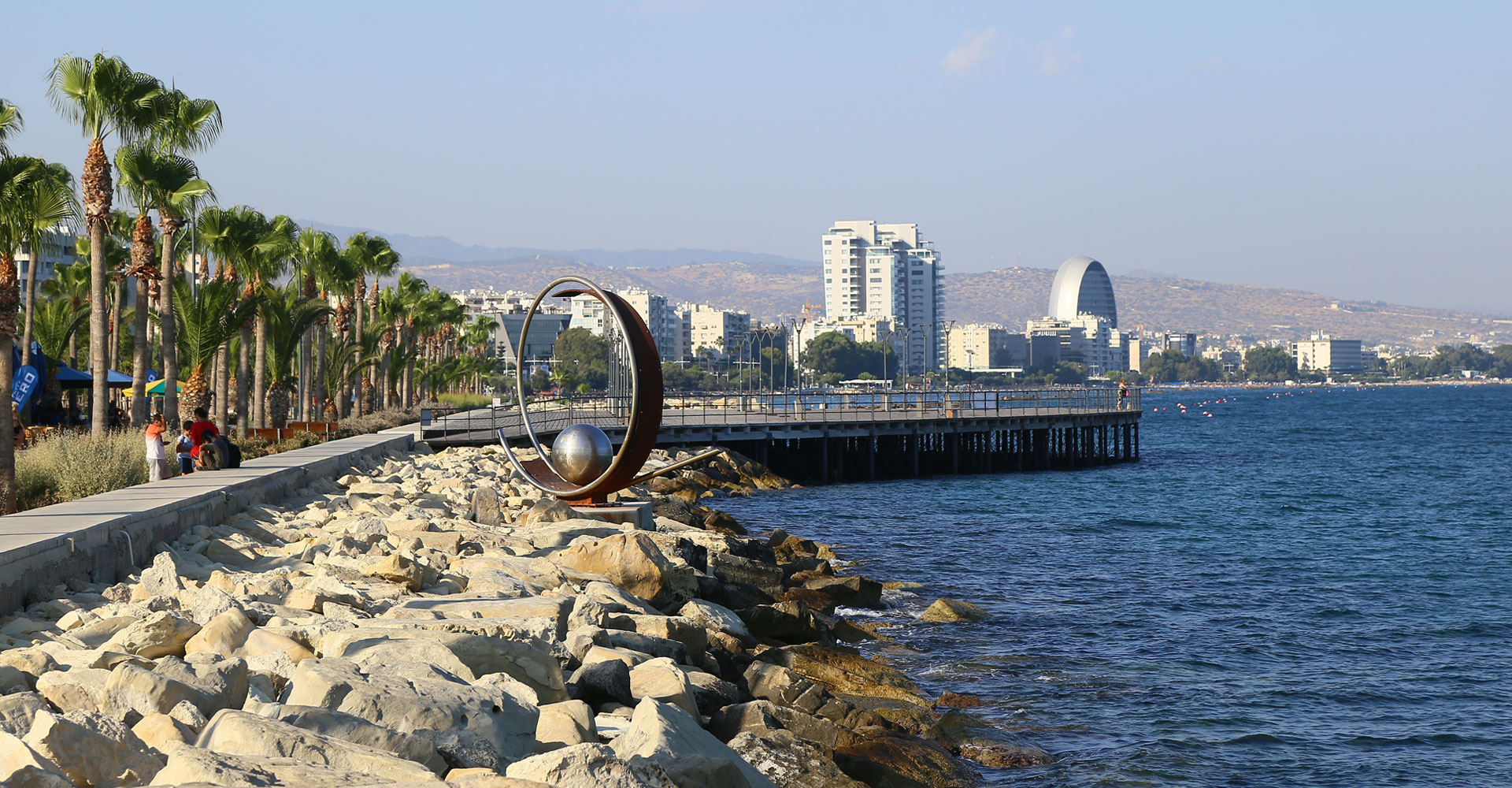
Παραλιακό μέτωπο – Επαρχία Λεμεσού

Λίμνη Αλυκής – Επαρχία Λάρνακας
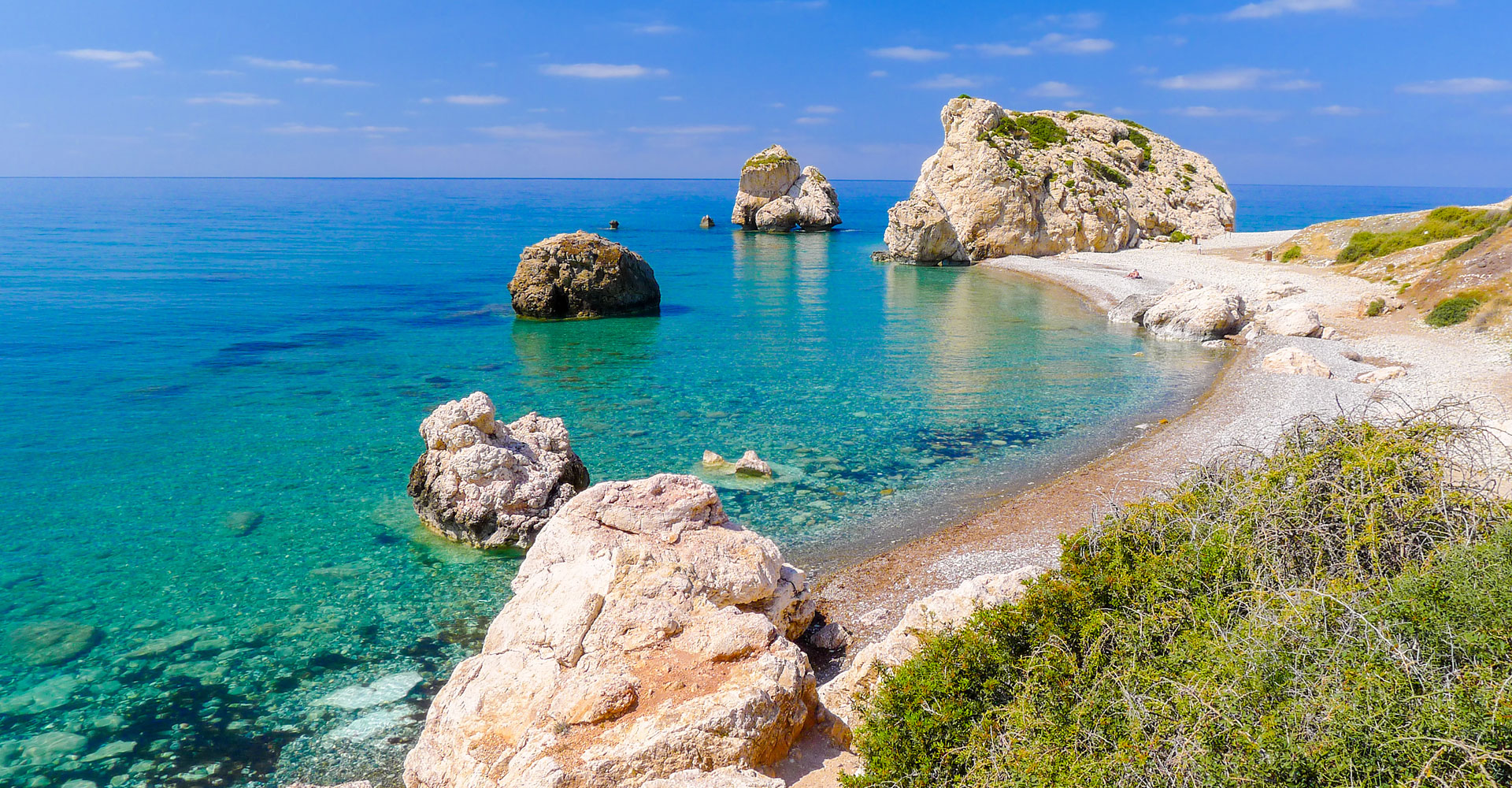
Πέτρα του Ρωμιού – Επαρχία Πάφου
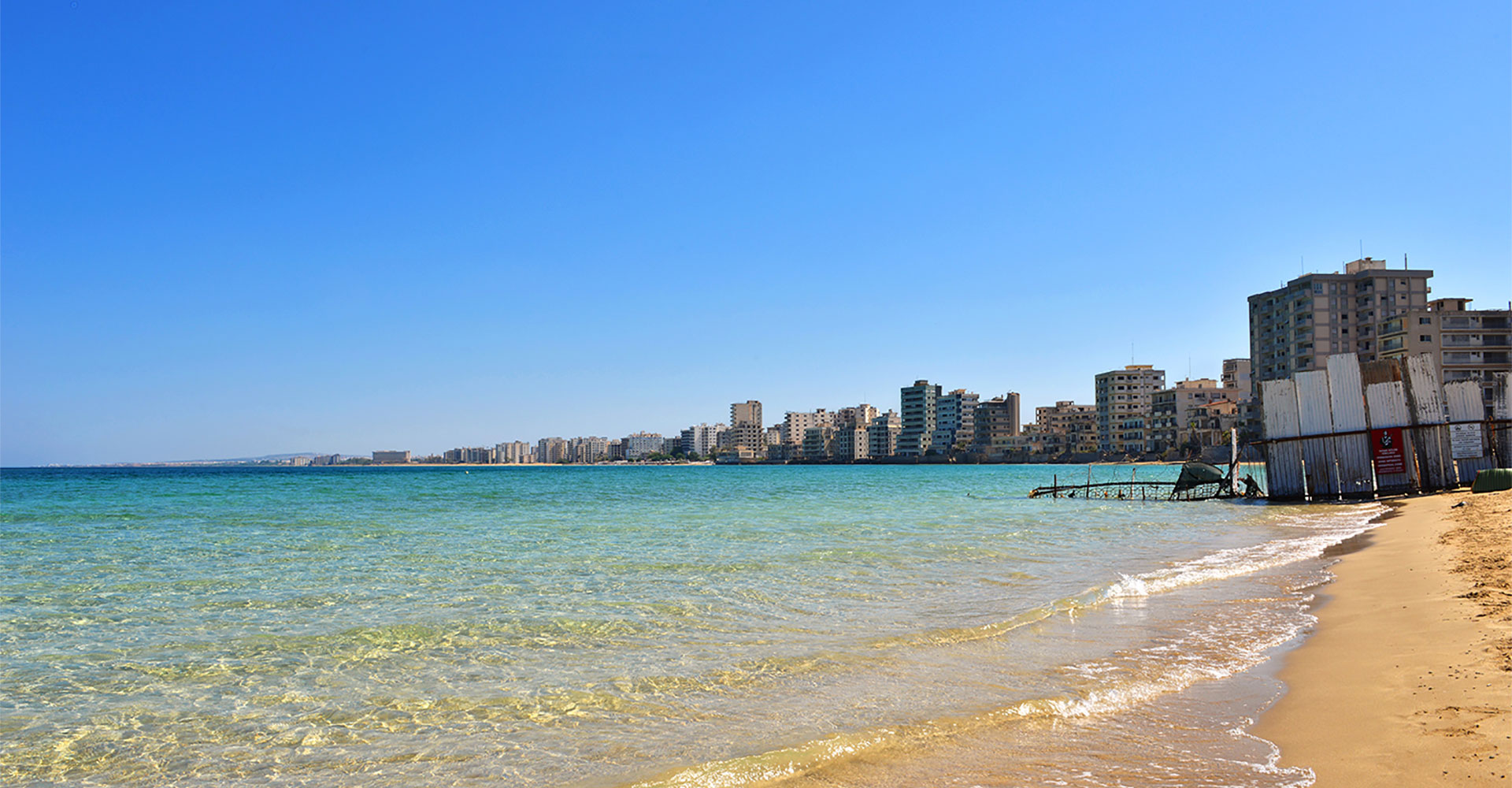
Παραλία Πόλης Αμμοχώστου - Επαρχία Αμμοχώστου
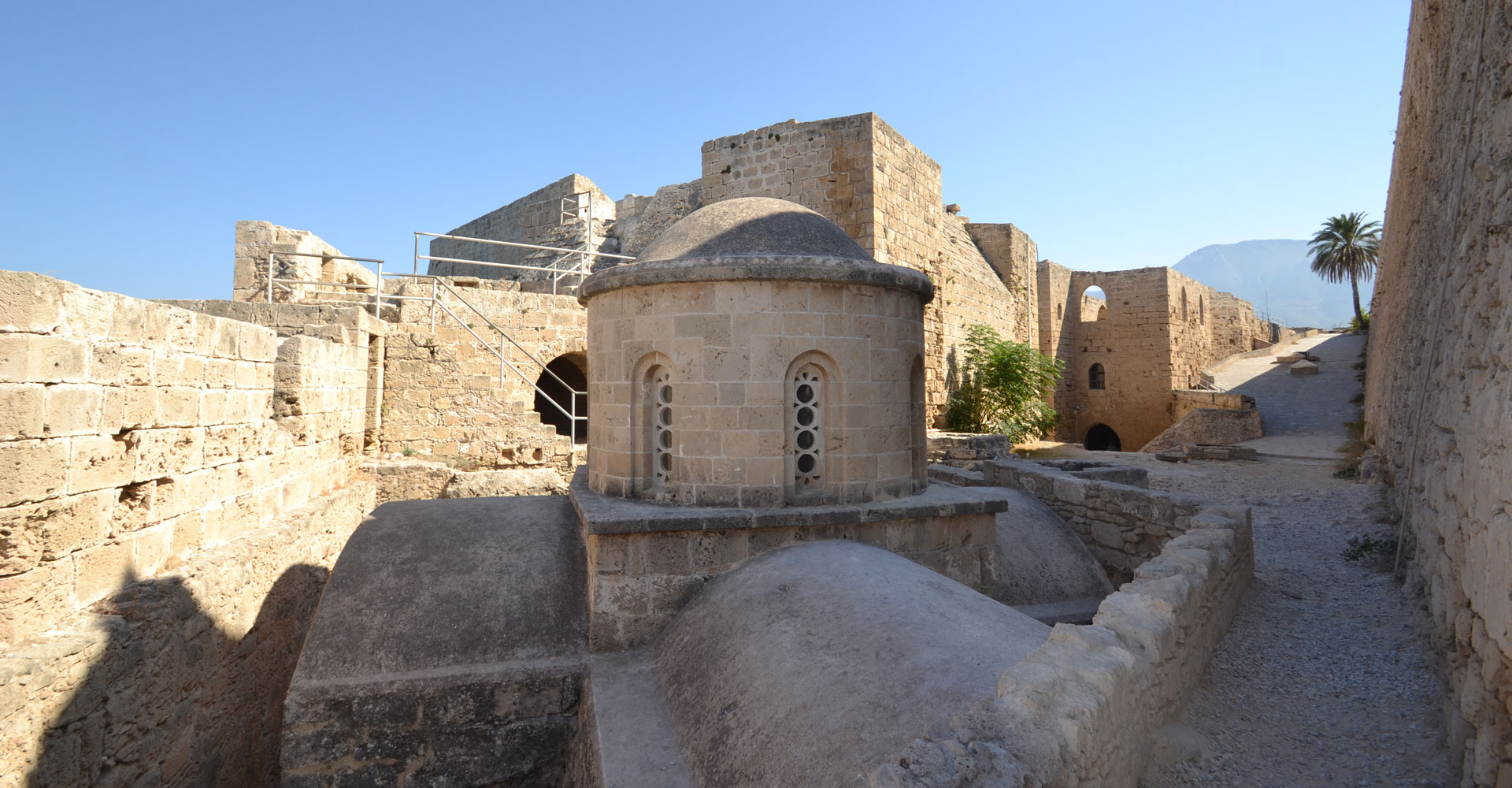
Κάστρο της Κερύνειας – Επαρχία Κερύνειας

Akanthou
Contact Details
Municipality under turkish occupation since 1974
P.O.Box: 42291
6532 Larnaca
Cyprus
Mayor: Eleni Hadjimichael
Tel.: +357 24623566 , +357 24635578
Fax: +357 24815008
Email: akathou@cytanet.com.cy
Website: http://www.akanthou.org.cy
A few words
The beautiful village of Akanthou, is located at the northern coast of Cyprus. Administratively the township belongs to the district of Ammochostos (Famagusta). Akanthou lies at the foot of mount Pendadaktylos overlooking the unique coastline of the Kyrenia district. Akanthou haw been under Turkish occupation since 1974, following the invasion of the island of Cyprus by Turkish. As part of their policy to change the demographic character of all occupied areas, the illegal Turkish authorities have changed the historic name of the village to “Tatlisou”. The lawful, indigenous citizens of the occupied township now live as refugees, (5,000 thousand before 1974) scattered over the government controlled areas of the island and overseas. They live with the hope that one day they will be able to return to their beloved village, their homes and properties.
The hills overlooking the village have unique features and were given various names according to their shapes. Such beautiful features are “The Stylarka”, “Thkiatripito” and “The Waterfalls”.
There were 22 small churches in the area of Akanthou and they all had the same fate like everything that was Greek or Christian after the Turkish invasion. The most violent desecration and destruction was suffered by the Church of Our Saviour which was the pride of Akanthou. The Church is an architectural monument built by the villagers and took 20 years to complete. The church was dedicated to the “Transfiguration or our Saviour” celebrated on the 6th of August each year and thousands of people from all over the island visited the village to pay homage to the Our Lord. The Church was one of the most wealthy and magnificent churches on the island.
Akanthou is one of the oldest municipalities in Cyprus. It had its own Mayor since 1908 and a Municipal Council. The then British High Commissioner was so impressed with the cultural standard, the hospitality and progressive spirit of the people of the village he recommended the establishment of the Municipality of Akanthou.
Today the Municipality of Akanthou is hospitalize to Larnaca.
At a glance
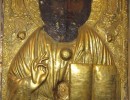
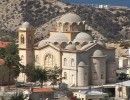
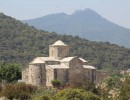
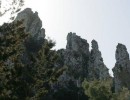
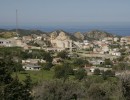

Agia Napa
Contact Details
P.O.Box: 30026
5340 Agia Napa
Cyprus
Mayor: Christos (Pieri) Zannettou
Tel.: +357 23 816300
Fax: +357 23 722607
Email: grammatia@agianapa.org.cy
Website: www.agianapa.org.cy
A few words
The Agia Napa region is characterized by the lack of rivers, and the scarcity of cultivated land. Therefore the distribution of settlements by period corresponds exactly to the possibilities of the land. The discovery in 2004 of a new early site at Nissi Beach, on coastal formations of aeolianite, dating back to 8.500 – 10.500 B.C. marks the short presence of the first seafaring foragers on the island. The first Neolithic inhabitants, however, came much later and settled for a short period of time on a naturally protected hill-top near the coast called Tigani before moving inland. For five millennia the area was not populated, as no traces of the Chalcolithic, Bronze Age and Geometric periods have so far been located.
The Cypro-Archaic and Cypro-Classical remains were once again located on a small promontory right on the coast. We do not know much about these people, as the only remains we have are but a few fragments of terracotta figurines from an improvised sanctuary situated on the beach at the site of Makronisos. The Hellenistic period is well represented by the sanctuary of Aphrodite on the table-shaped hill referred to by Strabo and described by Ohnefalsch-Richter as well as by the results of the excavations at Makronisos. The burial customs are practically Greek and correspond to that of other cemeteries of the same periods all over Cyprus particularly Salamis and Pafos. The pottery found in tombs suggests contacts with foreign countries, especially the Greek eastern world including Syria and Anatolia, North Africa and Italy.
The Roman period was notable for the erection of a number of farmsteads resulting from the establishment of the Pax Romana. Strongholds such as Palio Chorko continued their existence but the economy of the region was from now on based on individual farms. Little is known about the organization of the region, but the existence of a major town is evident in the later part of the Roman period. Both Strabo and Ptolemaios refer to “Thronoi city and cape”. The remains of Thronoi were found at the site of Torno west of the present village. Thronoi was the most important settlement while some minor settlements like Ziyagin and Kaounin were related to it. The extensive water-works at the locality of FiIina could be considered as part of the activities of an organized community residing at Thronoi. A number of quarries in the region provide further evidence for the organization of the society and the specialization of labour.
Most of the major settlements of the Roman period continue their existence well into the Early Christian period. The most important settlement, however, of the Early Christian and Early Byzantine period is Katalymata. It seems that most of the population shifted here to this new site where no remains of the pagan past were present. The settlement was a flourishing one, judging from the remains. The site was in its turn abandoned during the Arab raids of the 7th century along with other minor sites.
The region was deserted for centuries and most likely only shepherds wandered about the pastures until the 14th century, when the Lusignans, attracted by the charm of the region, built the Agia Napa Monastery. Gradually but steadily some people came into the region shortly after the erection of the monastery, either as work force for the construction of the aqueduct or as suppliers for the monks. Many of them settled permanently around the monastery and developed into the community. The village of Agia Napa became a reality which continued down to the present day. A small community of farmers and fishermen grew to a town towards the end of the 20th century.
At a glance
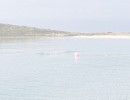
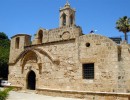
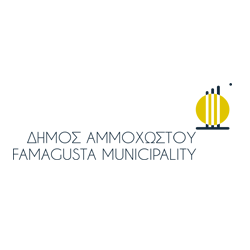
Ammochostos
Contact Details
Municipality under turkish occupation since 1974
P.O.Box: 51682
3507 Lemesos
Cyprus
Mayor: Simos Ioannou
Tel.: +357 25384073
Fax: +357 25386969
Email: ammochostos.famagusta.municipality@cytanet.com.cy
info@famagusta.org.cy
Website: http://www.ammochostos.org.cy, http://www.famagusta.org.cy/
A few words
Τοποθεσία
Η Αμμόχωστος είναι μια από τις έξι πόλεις της Κύπρου και πρωτεύουσα της ομώνυμης επαρχίας. Κτισμένη στον ομώνυμο κόλπο με την εξαιρετικής ομορφιάς αμμουδιά, πήρε το όνομα Αμμόχωστος ως πόλη χωμένη στην άμμο. Η γεωγραφική της θέση με τα πολλά πλεονεκτήματα συνέτεινε στο να εξελιχθεί η πόλη σε σπουδαίο λιμάνι και κέντρο εμπορίου καθώς και κέντρο γενικότερων σχέσεων της Κύπρου με τη Μέση Ανατολή.
Η ιστορία της πόλης
Έγκωμη (16ος – 12ος αιώνας π.Χ.)
Στις αρχές του 16ου αιώνα π.Χ. στην ανατολική Κύπρο, στις εκβολές του Πεδιαίου ποταμού δημιουργείται η Έγκωμη, μια μικρή πολιτεία η οποία εξυπηρετεί τις ανάγκες του κοντινού λιμανιού που ασχολείται με την εξαγωγή του χαλκού. Λειτουργούν εργαστήρια επεξεργασίας του χαλκού. Τη φήμη και τη ζωή της Έγκωμης εξιστορούν τόσο οι αρχαιολογικές ανασκαφές όσο και οι ιστορικές πηγές. Η Έγκωμη εγκαταλείπεται σταδιακά στο τέλος του 12ου αιώνα π.Χ.
Σαλαμίνα (11ος – 3ος αιώνας π.Χ.)
Η Σαλαμίνα, η πόλη του Τεύκρου, είναι η ενδοξότερη κυπριακή πόλη. Είναι η απόδειξη της ύπαρξης και της εγκατάστασης των Αχαιών στην Κύπρο, αλλά και η περίοδος των τριών αιώνων κατά την οποία διαμορφώθηκαν τα πρώτα κυπριακά βασίλεια.
Μια από τις πιο σημαντικές προσωπικότητες της αρχαιότητας στο νησί ήταν ο βασιλιάς της Σαλαμίνας Ευαγόρας ο οποίος σύμφωνα με τον Ισοκράτη, ήταν «άξιος να βασιλεύει όχι μόνο της Σαλαμίνας αλλά και της Ασίας όλης».
Επαναστάτησε ενάντια στους Πέρσες και αποκατέστησε την ελληνική εξουσία στη Σαλαμίνα το 411 π.Χ., ενώ έντονη ήταν η προσπάθειά του να ενώσει όλα τα κυπριακά βασίλεια. Ακολούθησε μια πολιτική εξελληνισμού του νησιού και ήταν ο Ευαγόρας που εισήγαγε στην Κύπρο το ελληνικό αλφάβητο. Το βασίλειο της Σαλαμίνας που ιδρύθηκε τον 11ο αιώνα έπαψε να υφίσταται τον 3ο αιώνα, όταν η Κύπρος προσαρτήστηκε στο Πτολεμαϊκό βασίλειο της Αιγύπτου.
Αρσινόη
Μετά την καταστροφή της Σαλαμίνας από σεισμούς, ο Πτολεμαίος Β΄ ο Φιλάδελφος ίδρυσε μετά το 274 π.Χ. στην Κύπρο τρεις πόλεις που έφεραν το όνομα της αδελφής του Αρσινόης εκ των οποίων η μια στα νότια τις Σαλαμίνας.
Κωνσταντία
Η ολοκληρωτική καταστροφή της χριστιανικής πια Σαλαμίνας από σεισμούς ήλθε το 332 και το 342 μ.Χ. Ο Κωνστάντιος, ένας από τους τρεις γιους του Μεγάλου Κωνσταντίνου, αναστήλωσε και πάλι την πόλη και τη μετονόμασε σε Κωνσταντία, η οποία αναπτύχθηκε σε πολιτική και εκκλησιαστική πρωτεύουσα της Κύπρου.
Στα μέσα του 7ου αιώνα αρχίζουν οι αραβικές επιδρομές που επιφέρουν την καταστροφή της Κωνσταντίας και την ολοκληρωτική εγκατάλειψή της και μετοίκηση του πληθυσμού προς ασφαλέστερη περιοχή νοτιότερα της Αρσινόης.
Αμμόχωστος
Λίγα γνωρίζουμε για την ίδρυση της πόλης. Από τον 3ο αιώνα μέχρι περίπου το 1200 μ.Χ. υπάρχει ένα κενό στις ιστορικές γνώσεις για την ίδρυση και τη δημιουργία της Αμμοχώστου. Δεν γνωρίζουμε, επίσης για τη Βυζαντινή Αμμόχωστο.
Η Φραγκοκρατία (1191 – 1489)
Η ιστορία της πόλης αρχίζει να γίνεται σαφέστερη, κυρίως μετά τη φραγκική κατοχή. Σ’ αυτό το διάστημα η Αμμόχωστος γίνεται η βάση της οικονομίας του κράτους των Λουζινιανών, ο κυριότερος διαμετακομιστικός σταθμός για όλο το εμπόριο της Ευρώπης με την Ανατολή και το κυριότερο λιμάνι.
Ως αποτέλεσμα της διαμάχης ανάμεσα στους Λουζινιανούς και τους Γενουάτες, το 1374 η Γένουα έστειλε το στόλο της στην Αμμόχωστο, ο οποίος κατέστρεψε και λεηλάτησε την πόλη. Η Αμμόχωστος έμεινε υπό γενουάτικη κατοχή για 90 χρόνια και κατά την περίοδο αυτή οδηγήθηκε σε γρήγορη παρακμή.
Η Ενετοκρατία (1489 – 1571)
Οι ενετοί παρέλαβαν το 1489 τη διακυβέρνηση του νησιού κάτω από τις απειλές των Τούρκων. Ως η κυριότερη ναυτική δύναμη της Μεσογείου, η Βενετία είχε αναλάβει να αναχαιτίσει την τουρκική επέλαση. Η Αμμόχωστος ήταν ήδη μια διαλυμένη πόλη εξαιτίας της πολύχρονης διαμάχης ανάμεσα στους Λουζινιανούς και τους Γενουάτες. Οι Ενετοί έφεραν στο νησί μηχανικούς από τη Βενετία στους οποίους ανέθεσαν την περαιτέρω ενίσχυση και ενδυνάμωση των οχυρώσεων της πόλης.
Η Τουρκοκρατία (1571 – 1878)
Μετά από πολιορκία ενός χρόνου και παρόλη τη γενναία αντίσταση των υπερασπιστών της, έπεσε η Αμμόχωστος στα χέρια των Τούρκων τον Αύγουστο του 1571. Οι Τούρκοι δεν επέτρεπαν σε χριστιανούς να κατοικούν στην εντός των τειχών πόλη της Αμμοχώστου. Έτσι, από τότε οι Έλληνες κάτοικοι άρχισαν αναγκαστικά να κατοικούν έξω από την εντός των τειχών Αμμόχωστο, στα προάστεια, γνωστά ως Βαρώσια.
Επακόλουθο αυτής της πορείας ήταν η δημιουργία της νέας πόλης της Αμμοχώστου.
Η Αγγλοκρατία (1878 – 1960)
Οι Άγγλοι, οι οποίοι παρέλαβαν μιαν ανατολίτικη πόλη σε άθλια κατάσταση, γρήγορα κατάλαβαν τη σημασία του λιμανιού της Αμμοχώστου. Όταν οι Άγγλοι έφθασαν στην Αμμόχωστο, είχε πληθυσμό 2.000 ανθρώπων. Στις αρχές του αιώνα, το 1904, γίνονται κάποια βελτιωτικά έργα στο λιμάνι, ενώ εγκαινιάζεται η σιδηροδρομική σύνδεση της Αμμοχώστου με τη Λευκωσία. Αυτό δίνει κάποιες ελπίδες και κάποια ώθηση στην εμπορικότητα της πόλης.
Η ανάπτυξη της Αμμοχώστου πριν από το 1974
Ο πληθυσμός της πόλης πριν από την τουρκική εισβολή και το βίαιο εκτοπισμό των νομίμων Ελληνοκυπρίων κατοίκων της ανερχόταν στους 45.000. Η Αμμόχωστος ήταν η τρίτη μεγαλύτερη πόλη της Κύπρου.
Η ύπαρξη του λιμανιού και η προσέλευση εργατικού δυναμικού από τις αγροτικές περιοχές ήταν ο κυριότερος συντελεστής αύξησης του πληθυσμού.
Μέχρι το 1974 το λιμάνι της Αμμοχώστου ήταν το κύριο λιμάνι του νησιού, τόσο από απόψεως χωρητικότητας, όσο και από απόψεως διακίνησης εμπορευμάτων και επιβατών.
Μετά την ανεξαρτησία της Κύπρου το 1960 υπήρξε μεγάλη ανάπτυξη στην πόλη, στους τομείς της βιομηχανίας και του εμπορίου.
Αλματώδης όμως ανάπτυξη ήταν αυτή στον τομέα του τουρισμού. Το 1973 ποσοστό 31.5% των ξενοδοχείων της Κύπρου βρίσκονταν και λειτουργούσαν στην Αμμόχωστο, και είχαν δυναμικότητα 45% του συνόλου των κλινών.
Η Αμμόχωστος πριν από το 1974 ήταν μια πόλη όνειρο. Μια πόλη που έσφυζε από ζωή. Ήταν μια πόλη με τα περιβόλια και τις ευωδίες των ανθών των εσπεριδοειδών της. Μια πόλη με τη χρυσή αμμουδιά. Μια πόλη γεμάτη ζωή. Η ραγδαία ανάπτυξη της πόλης οφειλόταν τόσο στο εμπνευσμένο Δημοτικό Συμβούλιο, όσο και στους φιλοπρόοδους κατοίκους της.
Η πρόοδος σε όλους τους τομείς σε συνδυασμό με τις φυσικές ομορφιές της, συνέβαλαν τα μέγιστα στην ανάπτυξη της Αμμοχώστου σε κέντρο πολιτιστικής ανάπτυξης. Η ζωγραφική, η ποίηση, η μουσική, το θέατρο, ο αθλητισμός, τα Ανθεστήρια, η Γιορτή του Πορτοκαλιού, η Γιορτή του Κατακλυσμού, αποτελούσαν μέρος της πολυσήμαντης πολιτιστικής και πνευματικής ζωής της Αμμοχώστου.
Ο τομέας όμως, στον οποίο κυριολεκτικά η Αμμόχωστος σημείωσε αλματώδη πρόοδο ήταν ο τουρισμός, με αποτέλεσμα πριν το 1974 να αποτελεί το πιο σημαντικό τουριστικό κέντρο του νησιού. Τα μνημεία της μεσαιωνικής εντός των τειχών πόλης κι οι αρχαιότητες της γειτονικής Σαλαμίνας και της Έγκωμης καθώς και οι όμορφες ακρογιαλιές της, έκαναν την πόλη περιζήτητο τουριστικό προορισμό.
Αγώνες για επιστροφή
Ολόκληρη η πόλη είναι σήμερα σκλαβωμένη. Ένα μέρος της πόλης, με το εμπορικό κέντρο και τα περισσότερα ξενοδοχεία της, είναι σήμερα περίκλειστο με συρματοπλέγματα. Στο υπόλοιπο μέρος της κατοικούν σήμερα Τούρκοι έποικοι και Τουρκοκύπριοι.
Η ερημιά και η βουβαμάρα κυριαρχούν στο περίκλειστο μέρος της πόλης, που αποκαλείται «πόλη φάντασμα».
Σαράντα πέντε χιλιάδες Αμμοχωστιανοί ζούν σήμερα πρόσφυγες στην ελεύθερη Κύπρο, αλλά και σε όλα τα πέρατα της οικουμένης.
Το εκλεγμένο Δημοτικό Συμβούλιο Αμμοχώστου, που εκπροσωπεί τους Αμμοχωστιανούς πρόσφυγες, αγωνίζεται τόσο στην Κύπρο όσο και στο εξωτερικό για προβολή του θέματος της Αμμοχώστου.
Η συνεχιζόμενη παράνομη κατοχή της πόλης της Αμμοχώστου από τα τουρκικά στρατεύματα από το 1974, αποτελεί κατάφωρη παραβίαση των αρχών και αξιών του διεθνούς δικαίου και παραβιάζει ξεκάθαρα όχι μόνο τα ανθρώπινα δικαιώματα, αλλά και τα δεσμευτικά ψηφίσματα 550 (1984) και 789 (1992) του Συμβουλίου Ασφαλείας, καθώς και τη Συμφωνία Υψηλού Επιπέδου Κυπριανού – Ντεγκτάς του 1979 , που προνοούν την επιστροφή της Αμμοχώστου στους νόμιμους κατοίκους της.
Το Δημοτικό Συμβούλιο Αμμοχώστου με τις ποικίλες δραστηριότητές του αγωνίζεται για επιστροφή στη γενέθλια γη. Το 2007, μετά από μια μεγάλη εκστρατεία του Δήμου Αμμοχώστου, περίπου 30.000 Αμμοχωστιανοί υπέγραψαν τη Διακήρυξη με αίτημα την επιστροφή.
Για σκοπούς διαφώτισης πραγματοποιούνται αποστολές αντιπροσωπιών του Δημοτικού Συμβουλίου και εκθέσεις φωτογραφιών της Αμμοχώστου στις Η.Π.Α., στις Βρυξέλλες, αλλά και σε πάρα πολλές ευρωπαϊκές χώρες.
Ο Δήμος Αμμοχώστου διοργανώνει επίσης διάφορες εκδηλώσεις και δραστηριότητες για Αμμοχωστιανούς κάθε ηλικίας, με σκοπό τη διατήρηση άσβεστης της μνήμης της κατεχόμενης πόλης μας.
Πολύ σημαντική είναι η λειτουργία του Πολιτιστικού Κέντρου του Δήμου Αμμοχώστου στην ελεύθερη περιοχή στη Δερύνεια, λίγα μόνο μέτρα από το συρματόπλεγμα. Το Πολιτιστικό αυτό Κέντρο είναι ο χώρος όπου χιλιάδες ξένοι και Κύπριοι τον επισκέπτονται κάθε χρόνο και ενημερώνονται σχετικά με το θέμα της Αμμοχώστου, αλλά και όπου πραγματοποιούνται εκδηλώσεις πολιτιστικού κυρίως περιεχομένου.
Εξήντα και πλέον σωματεία της Αμμοχώστου που ανήκουν στη Συντονιστική Επιτροπή Αμμοχώστου και έχουν δραστηριοποιηθεί στην προσφυγιά, είναι σε αγαστή συνεργασία με το Δήμο Αμμοχώστου.
Απώτερος σκοπός του Δημοτικού Συμβουλίου Αμμοχώστου είναι η ευαισθητοποίηση Κυπρίων και ξένων μέχρις ότου σημάνει η ώρα της πολυπόθητης ελευθερίας και επιστροφής στη γη που μας γέννησε.
At a glance
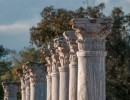
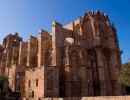
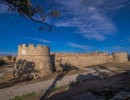
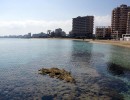
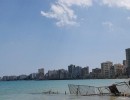
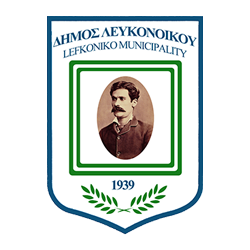
Lefkonoiko
Contact Details
Municipality under turkish occupation since 1974
P.O.Box: 14069
2153 Aglantzia
Cyprus
Mayor: Pieris Gypsiotis
Tel.: +357 22462951
Fax: +357 22462952
Email: lefkoniko@cytanet.com.cy
Website: http://www.dimoslefkonikou.org/
A few words
LEFKONIKO, the Pride of Mesaoria
What shall I first remember about you,
my beloved Lefkoniko?
Your whitewashed houses, your clean yards and gardens
the vast plains of Mesaoria
which were the source and inspiration of all that is deemed good?
And as she so aptly writes about our life in Lefkoniko with her personal style, our poet and our favourite teacher, presbyter Koula Paraskeva:
“On the hanging sheets
the crop is wealthy.
Every home an “euphoria” of goods.
And “euphoria” of joy, gentleness and hilarity.
And above all “euphoria” of self-sufficiency.
They had all they need. Nobody complained.
And “Glory to God“.
Yellow hued rays to warm the earth and her people”
The first house was whitewashed, and thus it was named Lefkoniko
Lefkoniko beloved!
“From all the other villages
you had a different grace
you were the jewel
and Pride of the Messoria!” A. Antoniou
Blessed land of our Lefkoniko!
Greek land, the land of the Achaeans, the Mycenaeans, the heroes of Homer. From the 7th century BC the excavations of archaeologists brought to light a sanctuary, dedicated to the God of Light, Apollo!
True witnesses to the statues that adorn the Cyprus Museum.
Here, the people developed culture for 3,000 years! Our testimonies are the stones, the earth, the statues, the hidden treasures of our land, the language, the traditional ethics and morals, the icons, wonderful examples of Byzantine art. Fortunately, by Divine Providence, the best works are to be found at the Byzantine Museum in Nicosia.
Lefkoniko, in the Franco era, the revolutionist Re Alexis made you her abode!
During the Ottoman domination, Lefkoniko at the beginning of the 19th century was the largest and the richest producing village of Cyprus! In order to understand the difference between Lefkoniko and other villages in terms of the size of their production, it can be said that “Lefkoniko had 139,750 kilos of Cypriot wheat, Athienou 72,960, Aradippou 60,160, Assia 88,960, Morphou 16,000, Dhali 52,480, Lysi 37,760, Trikomo 10,240, Prastio 26,240”.
Then, as they came to our island, the great ones of Old Albion, the first English commander of Famagusta, Captain Swaine, stopped by Lefkoniko during his itineration. It was the most important village of the province, therefore the Governor preferred to spend the night there.
Land of grain, land of richness, depth, blessed.
Honest people, industrious and philosophers, lovers of their land who richly rewarded them with each fruitful year. Full to the brim were the Grain Warehouses that were, and still are, the largest on our island!
In recent years in Agios Fokas, to the north of Lefkoniko, the orchards with the apricots and the ‘kaisia’ began to ripen early.
Humble people, hospitable, people of morals, measure and nobleness, decency, fervent and faith in God.
We had two churches, the Archangel Michael and the Church of our Saviour, additionally six chapels: of the Holy Cross, Prophet Elias, Saint Theodori, Agia Zoni, Agios Fokas and Agios Georgios in Melounda.
Archangel Michael’s church was in danger of collapsing, and thanks to the efforts of the Bi-communal Technical Committee on Culture, together with our Municipality, it was restored, and today our church stands proud and majestic.
People of duty and responsibilities, with aged old values and ideals unparalleled.
Present at every call of and for the homeland.
Many brave men gave their scarlet blood for the freedom of this soil. From the October Events of 1931, in 1945, the EOKA struggle, the inter-communal riots, the battles of Tillyrias and the 1974 Invasion.
I could not omit the participation of Lefkoniko in the Liberation Struggle of EOKA. The Lefkoniko High School, in particular, from where boys grew into active warriors for the cause.
Who could forget the Commander-led operation of the five-member Afxentiou team on November 4, 1955, against the Lefkoniko Police Station, from where they removed all their weapons?
Another event which marked life in Lefkoniko was the burning of our Post Office on 3rd December 1955, during a demonstration by the High School students against the measures imposed by the Governor Sir John Harding. A 5-day curfew followed and our fellow citizens were forced to pay a £2000 fine.
It is also worth mentioning the events during the March 25, 1945 parade, when the police forces in the centre of Lefkoniko opened fire against members of the Popular Organizations who insisted on reaching their clubhouse and dissolving. Three people were killed this day. A dark page in the life of our town.
People of knowledge!
With a crown of education placed upon their heads.
From 1840 there was a Community School in Lefkoniko, which was supported by the students’ parents.
Our High School was not only the pride of Lefkoniko but of all the surrounding area. In 1938 it was founded by a progressive teacher, Andreas Loizidis, as a private school called the “Lefkoniko Commerce College“.
In 1940 the school became communal and was renamed the “High School of Lefkoniko“, which in 1947 was transferred to a new school building on the hill of Profitis Elias and took the name of its benefactor, George Kamintzis. Then in 1960, the “Kamintzis High School of Lefkoniko” and therein
along with Cyprus’ Independence, was called the “Hellenic Gymnasium of Lefkoniko” and later in time “High School of Lefkoniko”.
With her Ionian Rhythm monumental gateway
majestic, imposing, archaic
the pediment, the cornice, the columns.
With the jasmine intoxicating our souls.
Our envious pride was the magnificent Ceremony Hall, which Archbishop Makarios inaugurated on May 26, 1968, one of the few on our island, imposing and magnificent, once again constructed by the donation from our benefactor Georgios Kamintzis
It is worth mentioning the ‘A’ District Festival of Lefkoniko in 1959 with the ancient Greek costumes, with the girls dressed in all white tunics and with carriers on their heads, with their crowns,
and the girls who embodied the Goddess of Snakes
the Minoan Goddess of Fertility, barefoot, with him
a small panther on the head, holding a snake in each hand. The festival was also applauded in GSP, where it was also presented, and it received excellent reviews.
Our last High School Principal was the late Lykourgos Kappas, who also served as Minister of Education and Culture, a remarkable spiritual man, a well-loved man, a nobleman.
People who believed in social justice and humanism!
This is why in our town on 22 November, 1909, the Cooperative Movement was founded.
As people from Lefkoniko, we took pride of our ancestors who were the pioneers of the Cooperative Movement on our island. We commemorate them, because Lefkoniko in the first decades of the 20th century was the zenith of the Cypriot countryside. There, the first Pancyprian agricultural meetings took place; the first Greek Cooperative Agricultural Bank was founded, where the farmers were relieved from the clutches of the loansharks, the “Lefkoniko Co-op Bank“. The two pioneers were Markos Charalambous, a teacher and Ioannis Oikonomidis, lawyer, parliamentarian, director of the Bank of Cyprus, who proposed the Cooperative Societies Act which was passed by the House in 1914.
People who were distinguished for their joy of life, laughter, love for entertainment.
The summer and winter cinema of Fyrilla, Panorama’s summer restaurant and cinema which belonged to Panagiotis Charalambous, the Acropolis Confectionery centre, Panikou Hatzikakou’s “Farmhouse”.
Progressive people, socially contributing, involvement of the community.
The Municipality of Lefkoniko was founded on April 1, 1939. The first mayor was Dr Christos Michalopoulos.
The women of Lefkoniko were well known for their intelligence, dynamism, neatness, honour, homeliness and their worthiness.
“Wherever I go, i see your streets in front of me,
your white houses,
your yards open.
These good Lefkoniko women
compete in household and hospitality” K. Paraskeva
Many have partaken, since the middle of the last century, the benefits of education. Many teachers and lecturers since the last century.
The women from Lefkoniko were also infamous weavers. They weaved their colourful linen always prepared with good taste and enthusiasm.
“What colours, in harmony! Those colours were a miracle!
The white of Lefkoniko
The red of flames
The deepest sky-blue
The green of the grass of the Mesaritiko plains
The yellow hue of the golden wheat
And many embroideries. How many embroideries … “K. Paraskeva.
The dedicated and talented housewives of Lefkoniko, as with the surrounding areas, were unsurpassed in the production of all sorts of pastries, with the specialities ‘τουμάτσια’ (toumatsia), the ‘διπλοπουρέκκια’ (diplopourekkia – double pourekkia), the ‘διπλοπισιήδες’ (diplopissiedes – double pastries) and the ‘τσιπόπιτα’ (tsippopitta – clotted cream pie). They were also distinguished in the making of wedding loukoumia (individual cakes given to guests at weddings).
Lefkoniko was also renowned for the ofton, oven-baked roast that was made with mastery, as well as for their yoghurt.
Indisputably, Lefkoniko took pride for the poet of 9th July 1921, Vasilis Michaelides, the Bishop of Kiti Kyprianos, the Archon Protopsalti Theodoulos Kallinikos and others.
Ultimately, Lefkoniko had a Courthouse, a Hospital, pharmacies, private clinics, a Dental clinic, a Police Station, a cattle-breeding station, a Sanitary station, a Governmental Agricultural office, a nursery, a Kindergarten, a bakery, an Elementary school, a Gymnasium, Clubhouses, bakeries, flour mills, industrial factories, soft drinks factory, furniture makers, gas stations, many commercial shops, goldsmiths, machine shops, olive mills, confectionaries, Municipal Slaughterhouse, dress manufacturing factories, a Power Station. Amongst the excellent craftsmen were those who invented the first threshing machine on our island.
At that time, Lefkoniko was at its peak. It was creating. It was progressing. It was writing History.
Nowadays, the children of Lefkoniko have grown up far away from it, in different directions as refugees. May God help them to live in the land of their ancestors. We have a duty to teach the young about our History and the Culture that we have brought with us. To impart this knowledge to
the next generations. Until the Sacred time of our return.
“The Turk took you and has chained you up
but I carry you in my heart ”
Koula Paraskeva
Zena Lysandrou Panayides
Mayor of Lefkoniko
(Data was obtained from the work of Archpriest Kyriacos Rigas)
At a glance
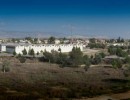
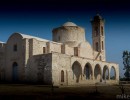
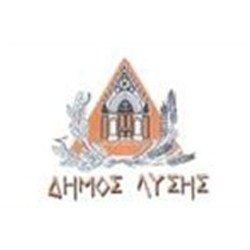
Lysi
Contact Details
Municipality under turkish occupation since 1974
P.O.Box: 40297
6302 Larnaca
Cyprus
Mayor: Andreas Kaouris
Tel.: +357 24661444
Fax: +357 24633330
Email: demoslysis@cytanet.com.cy
Website: http://www.demoslysis.com/
A few words
Ιστορικό
Είναι επώδυνη αλλά συνάμα και παρήγορη η αναψηλάφηση της ιστορίας ενός αγαπημένου τόπου ιδιαίτερα όταν αυτή γίνεται μετά από μια ασύλληπτη τραγωδία που οδήγησε στην κατάκτηση του
και στο βίαιο ξεριζωμό των ανθρώπων του.
Είναι επώδυνη, γιατί σαράντα χρόνια μετά η ελπίδα της επιστροφής ακολουθεί τη μοίρα των Λυσιωτών που τους τέλειωσαν τα χρόνια στην προσφυγιά και φύγανε παίρνοντας μαζί τους στο μνήμα ολοζώντανες τις μνήμες που λαχταρούσαν απεγνωσμένα τον τόπο τους έτοιμες για τη συνέχεια. Είναι επώδυνη ακόμα, γιατί αγώνες και θυσίες αιώνων, κόποι και μόχθοι γενεών άξιων, φιλόπονων, φιλότιμων, φιλήσυχων και προοδευτικών ανθρώπων, αγρυπνίες, προσευχές, ψαλμοί και δεήσεις αγίων και οσίων, εξαίσιες μουσικές, στίχοι, χοροί, θέατρα και αθλήματα και άλλα πολλά ωραία και σημαντικά που ήταν αλληλένδετα με το χώρο και την κοινότητα των ανθρώπων του κινδυνεύουν να χαθούν για πάντα.
Είναι παρήγορη από την άλλη, γιατί στη μακραίωνη μας ιστορία σιδερόφρακτοι κατακτητές ήλθαν και απήλθαν, τραγωδίες και καταστροφές ήλθαν και παρήλθαν, δικαιώνοντας τον ποιητή για τη Ρωμιοσύνη. Η πεποίθηση αυτή θα μας κρατήσει ζωντανούς στον αγώνα για δικαίωση και επιστροφή.
At a glance
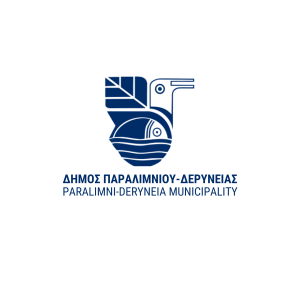
Paralimni – Deryneia
Contact Details
P.O.Box: 33033
5310 Paralimni
Cyprus
Mayor: George Nikolettos
Tel.: +357 23819300
Email: info@paralimni.org.cy
Website: www.paralimni.org.cy
A few words
Ιστορία
Το Παραλίμνι είναι η μεγαλύτερη κοινότητα της πλούσιας πεδιάδας της Επαρχίας Αμμόχωστου και βρίσκεται στο νοτιοανατολικό άκρο της Κύπρου, σημείο από το οποίο μπορεί κανείς να απολαύσει την πρώτη ανατολή του ήλιου σε ολόκληρη την Ευρώπη.
Οι ρίζες του χωριού είναι πολύ μακρινές. Από τα ελληνιστικά χρόνια ήταν κτισμένη στη περιοχή η αρχαία πόλη Λεύκολλα. Σήμερα δεν διατηρείται τίποτε από την πόλη αυτή. Τα βυζαντινά χρόνια το Παραλίμνι ήταν μικρότερος οικισμός ή μάλλον αποτελείτο από πολλούς μικρότερους αγροτικούς οικισμούς. Ο μεγαλύτερος απ’ αυτούς πρέπει να ήταν κτισμένος στην περιοχή ανάμεσα στο παλιό χωριό και το σημερινό Λύκειο, εκεί που σήμερα βρίσκεται η εκκλησία του Αγίου Δημητρίου. Αυτό είναι φανερό από τα απομεινάρια του οικισμού που είναι σκορπισμένα στα χωράφια της περιοχής με τη μορφή πολλών μικρών λιθαριών. Στην περιοχή, οι γεωργοί έτυχε πολλές φορές να ανακαλύψουν με το αλέτρι τους διάφορα άλλα αντικείμενα, που μαρτυρούν την ύπαρξη του οικισμού. Τα σημαντικότερα ευρήματα είναι διάφορα βυζαντινά νομίσματα.
Η περιοχή του οικισμού αυτού έχει πανοραμική θέα προς τη θάλασσα. Αυτό ίσως να είναι και η αιτία της εγκατάλειψης και της καταστροφής του. Τον 7ο αιώνα άρχισαν στην Κύπρο οι αραβικές επιδρομές. Οι άραβες κουρσάροι ήταν ο φόβος και ο τρόμος των κατοίκων της Κύπρου. Οι κουρσάροι έφταναν με τα πλοία τους στα παράλια της Κύπρου και κούρσευαν τις κοινότητες που έβρισκαν στις παραλιακές περιοχές. Οι Κύπριοι τότε πήραν διάφορα μέτρα για να αμυνθούν. Σπουδαιότερο και ασφαλέστερο μέτρο ήταν η μετακίνηση του χωριού σε μέρος που είναι αθέατο από τη θάλασσα. Αυτή φαίνεται να είναι η αιτία που εγκαταλείφθηκε ο οικισμός στην περιοχή του Αγίου Δημητρίου και οι κάτοικοι μετακινήθηκαν στη θέση που είναι σήμερα το κεντρικό τμήμα του Δήμου Παραλιμνίου η οποία που είναι αθέατη από τη θάλασσα.
Στην περιοχή φαίνεται ότι υπήρχαν κι άλλοι μικροί αγροτικοί οικισμοί, που σιγά-σιγά εγκαταλείφθηκαν ή ενώθηκαν και σχηματίστηκε το νεότερο χωριό, το Παραλίμνι. Ένδειξη για την υπόθεση αυτή, αποτελούν τα πολλά ξωκλήσια που βρίσκονται γύρω από το Παραλίμνι. Μερικά από τα ξωκλήσια βρίσκονται σήμερα μέσα στην κατοικημένη περιοχή του παλιού χωριού.
Αναφορικά με την προέλευση του ονόματος του Δήμου μας, το Παραλίμνι πήρε το όνομα του από μια εποχιακή λίμνη «Παρά τη λίμνη» η οποία συγκαταλέγεται στους προστατευόμενους βιότοπους του Δικτύου NATURA2000 και σχηματίζεται στα δυτικά της κοινότητας, μεταξύ Παραλιμνίου και Σωτήρας. Λόγω της θέσης του χωριού, υιοθετήθηκε το όνομα «Παρά τη λίμνη», το οποίο με τη χρήση τροποποιήθηκε και έγινε ουδέτερο και έτσι το χωριό ονομάστηκε Παραλίμνι. Το 1963, η περιοχή του χωριού ανακηρύχθηκε περιοχή Συμβουλίου Βελτιώσεως Παραλιμνίου, δηλαδή σε επιτροπή αυτοδιοίκησης των χωριών και το 1986, μετά από δημοψήφισμα το Παραλίμνι ανακηρύχθηκε σε Δήμο, με την ονομασία «ΔΗΜΟΣ ΠΑΡΑΛΙΜΝΙΟΥ» και έκτοτε είναι ο μεγαλύτερος δήμος του ελεύθερου τμήματος της επαρχίας Αμμοχώστου. Αξίζει να σημειωθεί ότι το Μάιο του 1986, έγιναν οι πρώτες εκλογές για ανάδειξη Δημάρχου και Δημοτικού Συμβουλίου, με πρώτο δήμαρχο τον κ. Νίκο Βλίττη.Σήμερα, έχει περίπου 15.000 κατοίκους και είναι χωρισμένο σε αστική και τουριστική ζώνη. Η τουριστική ζώνη αποτελείται από τον Πρωταρά ο οποίος είναι παραθαλάσσιο προάστιο του Παραλιμνίου με όμορφες αμμώδεις παραλίες, με καθαρά και καταγάλανα νερά και πολλά ξενοδοχειακά συγκροτήματα. Το Παραλίμνι είναι μια πλούσια μικρή πόλη που αναπτύσσεται ραγδαία σ’ όλους τους τομείς της οικονομικής, της κοινωνικής και της πολιτιστικής ζωής.
At a glance
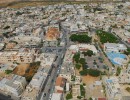
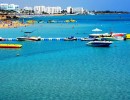
LINKS
Contact us
Address:
78, Rigainis Str. CY-1010 Nicosia
P.O.Box 22033, CY-1516 Nicosia, Cyprus
Tel: +357 22 445170
Fax: +357 22 677230
Email: endeky@ucm.org.cy
